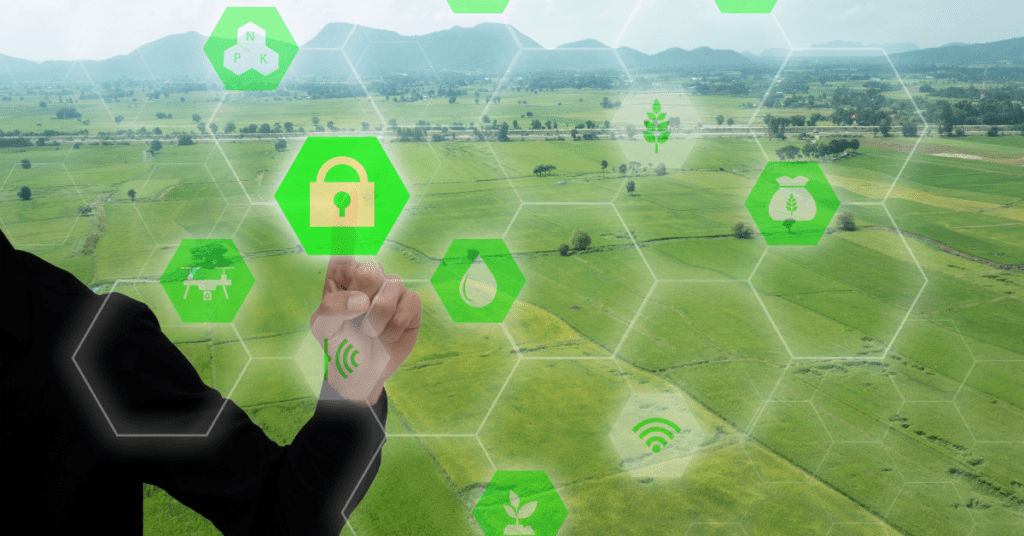Current State of IoT in Healthcare: The current landscape of healthcare is being reshaped by the integration of Internet of Things (IoT) technologies. From smart medical devices to remote patient monitoring systems, IoT is revolutionizing the way healthcare is delivered. Hospitals and clinics are adopting IoT solutions to enhance patient care, improve operational efficiency, and enable real-time data monitoring. These IoT devices range from wearable sensors to sophisticated medical equipment, facilitating seamless communication between patients, healthcare providers, and medical records. By harnessing the power of IoT, healthcare organizations are paving the way for a future where proactive, personalized care is the norm, ultimately leading to better health outcomes.
Future Trends in IoT Healthcare:
As technology continues to advance, the future of healthcare with IoT holds immense promise. One significant trend is the expansion of IoT applications beyond traditional medical settings. IoT devices are increasingly being integrated into patients’ daily lives through wearable technology and mobile health apps, enabling continuous monitoring of vital signs and health metrics. This shift towards remote patient monitoring empowers individuals to take charge of their health and enables healthcare providers to deliver more proactive and personalized care.

Moreover, the integration of IoT with wearable devices and mobile apps is expected to revolutionize remote patient monitoring. These devices can track a wide range of health parameters in real-time, providing clinicians with valuable insights into patients’ health status outside of clinical settings. From monitoring blood pressure and glucose levels to tracking physical activity and sleep patterns, IoT-enabled wearables offer a comprehensive view of patients’ health, enabling early intervention and preventive care strategies.
Another key trend is the use of IoT for predictive analytics and personalized medicine. By analyzing large volumes of patient data collected from IoT devices, healthcare providers can identify patterns, trends, and correlations that can inform treatment decisions and predict potential health outcomes. This predictive analytics capability has the potential to revolutionize disease management, allowing for more targeted interventions and improved patient outcomes.
Furthermore, the emergence of smart hospitals and healthcare ecosystems is expected to reshape the delivery of healthcare services. IoT-enabled infrastructure and connected medical devices within hospitals can streamline workflows, enhance patient safety, and improve operational efficiency. For example, IoT sensors can monitor the availability of medical supplies and equipment, optimize facility maintenance schedules, and even predict patient flow to minimize wait times and overcrowding.
In conclusion, the future of healthcare with IoT is characterized by innovative technologies that empower patients, enable personalized care, and optimize healthcare delivery. By embracing these trends and leveraging the power of IoT, healthcare organizations can unlock new opportunities to improve patient outcomes, enhance operational efficiency, and transform the healthcare experience for patients and providers alike.
Challenges and Considerations:
Despite the transformative potential of IoT in healthcare, several challenges and considerations must be addressed to realize its full benefits. One of the primary concerns is data security and privacy. With the proliferation of connected devices collecting sensitive health information, there is an increased risk of data breaches and unauthorized access. Healthcare organizations must implement robust cybersecurity measures to protect patient data and comply with regulations such as the Health Insurance Portability and Accountability Act (HIPAA).

Interoperability presents another significant challenge in the adoption of IoT in healthcare. Many IoT devices and systems operate in silos, making it difficult to exchange data seamlessly between different platforms. Interoperability issues can hinder the integration of IoT solutions into existing healthcare IT infrastructure, leading to fragmented data and inefficient workflows. Addressing interoperability challenges requires the development of standardized protocols and data exchange frameworks that enable seamless communication between disparate systems.
Regulatory challenges also pose a barrier to the widespread adoption of IoT in healthcare. Healthcare organizations must navigate complex regulatory requirements and compliance standards governing the use of medical devices and patient data. Ensuring compliance with regulations such as the Food and Drug Administration (FDA) guidelines for medical device cybersecurity and the European Union’s General Data Protection Regulation (GDPR) is essential to mitigate legal and financial risks associated with non-compliance.
Ethical considerations surrounding the use of IoT data in healthcare decision-making further complicate the adoption of IoT solutions. Healthcare providers must ensure transparency and accountability in how patient data is collected, stored, and utilized. Additionally, there are concerns about bias and discrimination in algorithmic decision-making processes based on IoT-generated data. Addressing these ethical concerns requires ongoing dialogue and collaboration between stakeholders to establish ethical guidelines and best practices for the responsible use of IoT in healthcare.
In summary, while IoT holds great promise for transforming healthcare, addressing challenges related to data security, interoperability, regulation, and ethics is crucial to realizing its full potential. By proactively addressing these challenges and considerations, healthcare organizations can harness the power of IoT to improve patient care, enhance operational efficiency, and drive innovation in healthcare delivery.
The Road Ahead: Strategies for Success:
Navigating the challenges associated with IoT in healthcare requires a strategic approach and collaborative effort among stakeholders. One key strategy for success is fostering collaboration between healthcare providers, technology developers, and regulators. By working together, these stakeholders can develop interoperable solutions that meet regulatory requirements while addressing the unique needs of healthcare organizations and patients.
Investment in robust cybersecurity measures is essential to safeguarding patient data and protecting against cyber threats. Healthcare organizations must prioritize cybersecurity training and awareness programs for staff, implement encryption and access controls for IoT devices, and regularly assess and update their security protocols to address emerging threats.
Furthermore, promoting interoperability standards and data exchange frameworks is critical to overcoming interoperability challenges. Healthcare organizations should advocate for the adoption of open standards and interoperability guidelines that facilitate seamless communication between different IoT devices and healthcare systems. This will enable data sharing and integration across the healthcare ecosystem, leading to more comprehensive and coordinated care delivery.
Compliance with regulatory requirements is non-negotiable in the healthcare industry. Healthcare organizations must stay abreast of evolving regulatory landscape and ensure compliance with relevant laws and standards governing the use of IoT devices and patient data. This may involve conducting regular risk assessments, implementing privacy-enhancing technologies, and establishing policies and procedures to mitigate compliance risks.
Finally, patient education and engagement are essential for the successful implementation of IoT-enabled healthcare solutions. Healthcare organizations should educate patients about the benefits and risks of IoT devices, empower them to make informed decisions about their health data, and involve them in the design and development of IoT-enabled care pathways. By fostering a culture of patient-centered care, healthcare organizations can build trust and confidence in IoT technologies and promote positive health outcomes for patients.
In conclusion, by adopting a strategic approach and implementing these key strategies, healthcare organizations can overcome challenges and maximize the potential of IoT in transforming healthcare delivery. With collaboration, investment in cybersecurity, promotion of interoperability, compliance with regulations, and patient engagement, the road ahead for IoT in healthcare is paved with opportunities to improve patient care, enhance operational efficiency, and drive innovation in healthcare delivery.
Conclusion:
In the ever-evolving landscape of healthcare, the integration of Internet of Things (IoT) technologies presents a transformative opportunity to revolutionize patient care delivery and healthcare outcomes. As discussed, while IoT holds immense promise, it also brings forth a myriad of challenges and considerations that must be carefully navigated.
Through the current state of IoT in healthcare, we’ve witnessed the tangible benefits it offers, from enhanced patient monitoring to streamlined operational workflows. However, the future trends in IoT healthcare promise even more profound impacts, including personalized medicine, predictive analytics, and the emergence of smart healthcare ecosystems. These advancements hold the potential to fundamentally reshape the way healthcare is delivered, empowering patients and healthcare providers alike.
Yet, alongside these promises come significant challenges. Data security and privacy concerns, interoperability issues, regulatory compliance, and ethical considerations demand vigilant attention and proactive solutions. Addressing these challenges will require collaboration, investment, and ongoing dialogue among stakeholders.
Looking ahead, successful navigation of the road ahead requires strategic initiatives. This involves fostering collaboration among stakeholders, investing in robust cybersecurity measures, promoting interoperability standards, ensuring regulatory compliance, and prioritizing patient education and engagement.
In conclusion, while the road ahead may be fraught with challenges, the opportunities presented by IoT in healthcare are too significant to ignore. By embracing these opportunities and addressing challenges head-on, healthcare organizations can unlock the full potential of IoT to improve patient care, enhance operational efficiency, and drive innovation in healthcare delivery. With careful planning, strategic investment, and a patient-centered approach, the future of healthcare with IoT is bright, promising a world where technology works hand-in-hand with humanity to deliver better health outcomes for all.
Read More
- Forbes – “How IoT is Impacting The Healthcare Industry”
- Link: Forbes Article
- This Forbes article explores the current and future impact of IoT on the healthcare industry, discussing trends, challenges, and opportunities.
- HealthTech Magazine – “Navigating the Role of IoT in Healthcare”
- Link: HealthTech Magazine Article
- HealthTech Magazine provides insights into the role of IoT in healthcare, discussing its potential to improve patient care, streamline operations, and enhance data-driven decision-making.
- Harvard Business Review – “The Promise of IoT in Healthcare: How It’s Driving Better Patient Outcomes”
- Link: Harvard Business Review Article
- This Harvard Business Review article delves into the promise of IoT in healthcare, exploring its potential to drive better patient outcomes through remote monitoring, predictive analytics, and personalized medicine.
